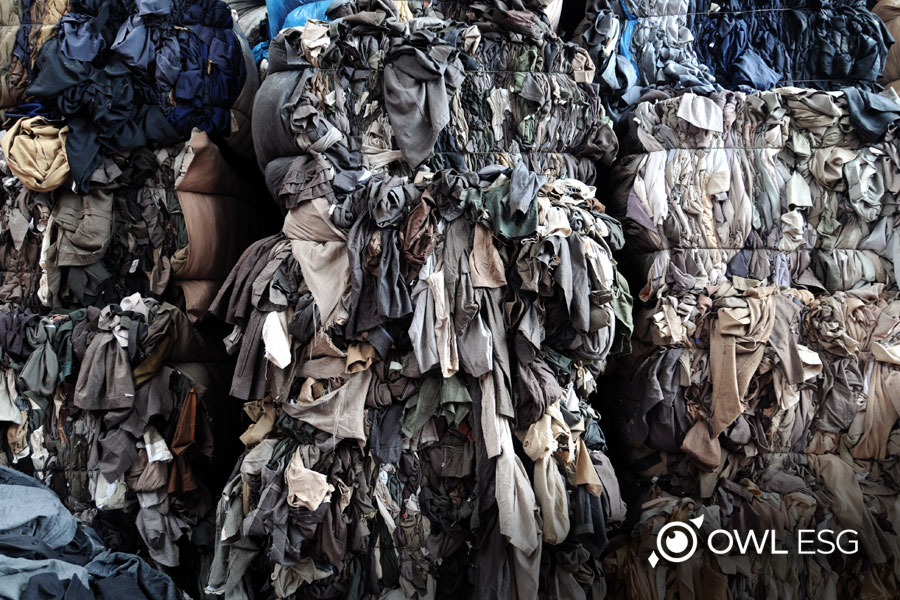Unraveling the Thread: How the Fashion Industry’s Waste Contributes to Climate Change
Let’s be real. We’ve all bought clothes we either never wear, wear once, or wear all the time and then throw away. But have you ever wondered where it goes after you’re done with it? In a world driven by trends and fast-paced consumerism, the fashion industry stands as one of the largest global sectors. Yet, beneath the allure of new styles and runway glamour lies a darker reality: the fashion industry’s immense contribution to environmental degradation, particularly in the form of waste. From discarded garments to excessive production processes, the fashion industry’s waste is playing a significant role in exacerbating climate change.
The rise of fast fashion has revolutionized the way consumers perceive and purchase clothing. Brands churn out new designs at an unprecedented rate, enticing consumers to buy more, wear less, and dispose of garments quickly.
This throwaway culture not only fosters overconsumption but also leads to mountains of discarded clothing in landfills, where they decompose and release methane—a potent greenhouse gas (GHG) that contributes to global warming. Moreover, when textiles are produced in conjunction with manufacturing, significant amounts of carbon dioxide are released into the atmosphere.
The question then remains: how much carbon dioxide is saved via clothing reuse? While the fashion industry is estimated to be responsible for 8-10 percent of global carbon emissions, when clothing is recycled, it saves roughly 3-4lbs of carbon dioxide. Put into another perspective, this equates to taking 26,000-35,000 vehicles off the road.
Resource-Intensive Production
The fashion industry’s hungry appetite for resources adds to its environmental toll. From water-intensive cotton cultivation to energy-demanding manufacturing processes, the production of clothing is often far from sustainable. The extraction of raw materials, such as petroleum-derived synthetic fibers, further drives carbon emissions and reduces non-renewable resources, all while contributing to the industry’s carbon footprint.
Textile Waste and Landfills
The fashion industry generates a staggering amount of textile waste, with a significant portion of it ending up in landfills. In fact, 85 percent of our clothes end up in landfills or burned yearly in the U.S. That’s roughly 81lbs of clothing per person—the weight of an 11-year-old child.
Even if we tried to recycle all our old or unused clothes, not all textiles are recyclable to begin with. In fact, most clothing is made from plastic. Natural fibers (cotton, silk, hemp) can take years to decompose while synthetic materials like polyester, nylon, and acrylic, can take centuries, sometimes releasing toxic substances into groundwater and surrounding soil.
As these materials break down, they release GHGs and harmful chemicals into the environment, contributing to pollution and climate change. Moreover, the decomposition process in landfills lacks oxygen (AKA the anaerobic process), leading to the release of methane—a gas with a much greater warming potential than carbon dioxide.
Global Supply Chains, Retailers, and Manufacturers
The fashion industry’s complex global supply chains span multiple countries, leading to significant transportation-related emissions. Garments often travel thousands of miles before reaching consumers, consuming vast amounts of fossil fuels in the process. Additionally, the demand for “on-trend” clothing drives expedited shipping, which further intensifies carbon emissions and ecological strain.
Around 13 million tons of clothing waste comes from manufacturers and retailers every year. Manufacturers choose what fibers to use in textiles and overproduce clothing, leaving retailers overstocked. And, as seasons change, unsold supplies are thrown away and into landfills.
In parallel, the fashion industry overproduces products by about 30-40 percent every season, contributing to roughly 10 percent of all global carbon emissions—not to mention they are the second leader contributing to plastic and water pollution.
Moving forward (in style)
While some strides have been made in promoting sustainability, the industry’s circular practices remain limited. Recycling rates for textiles are low, and many garments are designed without consideration for durability or recyclability. This lack of circularity affects the linear model of production, contributing to the constant extraction of raw materials and increased waste generation.
However, with the right practices and policies that work to reduce environmental pollution, sustainability is possible. For example, natural cellulosic and protein fibers are better not only for the environment, but for human health. Even further, lyocell, which is made from the cellulose of bamboo, is made in a closed loop production cycle where 99 percent of the chemicals used are recycled.
Organizations like the National Council of Textiles Organization are offering evaluation and auditing tools for fair trade and production standards. Yet, many companies are involved in the process of greenwashing: exploiting the emotional appeal of eco-friendly and ethically-sourced products by marking products as “green” without following any specific standards or guidelines.
To address these practices, the fashion industry should universally adopt globally recognized certification standards to promote eco-friendly practices and improve supply chain safety. However, consumers should remain attentive against greenwashing, differentiating companies genuinely upholding high standards from those making vague claims about their social and sustainable practices.
The fast fashion model flourishes through the concept of obtaining more for less, yet consumers must embrace the timeless saying “less is more” to effectively confront environmental justice concerns in the fashion industry.
The fashion industry’s waste problem is an urgent call to action. As consumers, brands, and policymakers, we must recognize the severe consequences of unchecked waste production and work collectively to reverse this trend. By advocating for sustainable practices and supporting eco-friendly initiatives, we can begin to mitigate the industry’s impact on climate change. From reducing overconsumption to investing in innovative recycling technologies, every step taken to address fashion waste brings us closer to a more sustainable future where style and responsibility coexist harmoniously.




